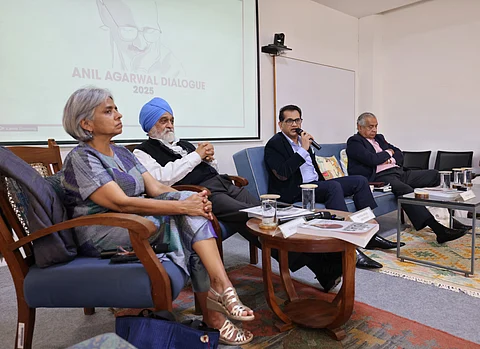

Top economists in India have advocated for pricing water as a commodity, arguing that a structured pricing mechanism could help manage the country’s growing water crisis.
Speaking at the Anil Agarwal Dialogue, an annual media conclave held in Nimli, Rajasthan on February 26, 2025, experts like Montek Singh Ahluwalia, former deputy chairperson of the Planning Commission and Amitabh Kant, former chief executive of central public policy think tank NITI Aayog, warned that water issues in India would worsen over time, with reduced water availability.
On the other hand, Sunita Narain, director general of Delhi-based think tank Centre for Science and Environment, cautioned that managing water resources through pricing would be capital-intensive and even the wealthy might struggle to afford the costs.
Ahluwalia said we have to recognise that water has to be economised. “Either you rationalise the entire water supply, or you price water adequately,” he said.
The economist added that non-governmental organisations (NGO) concerned with water management support the idea of pricing water. “I believe water as a resource should be nationalised, and the entire supply, including groundwater, should be rationalised,” he said. Otherwise, Ahluwalia warned, the longstanding practice of underpricing canal water would persist.
He pointed to developed nations such as the United States and Australia, which have implemented innovative solutions to address water scarcity through pricing mechanisms.
Kant echoed Ahluwalia’s views, noting that countries like Singapore have progressed economically due to water pricing. He highlighted India’s water scarcity, saying, “India has 17 per cent of the world’s population but only 4 per cent of its water. Over 89 per cent of our water is consumed by agriculture, particularly for sugarcane and rice, meaning we are effectively exporting virtual water through basmati rice.”
Kant further argued that farmers are not charged for the water used to grow these crops, nor for the electricity that powers irrigation systems, leading to excessive water extraction.
Another major challenge, Ahluwalia noted, is the struggle between states over water distribution. Under the Indian Constitution, each state controls the water within its boundaries, leading to conflicts when rivers flow across multiple states.
“Upper riparian states have more control over water, while lower riparian states often depend on upstream states for their water needs, leading to arbitration or judicial disputes,” he explained.
Kant underscored the political challenges of implementing water pricing. “Politicians use free doles and populism to attract votes, which is draining government treasuries,” he said. He advocated for a pricing system where lower consumption is charged less while higher users pay more.
He also argued that citizens are willing to pay for reliable water access. Citing an example from a slum in Nagpur, Maharashtra, he said that residents agreed to pay for piped water when given access, but political resistance and vested interests within the water mafia have hindered systemic reforms.